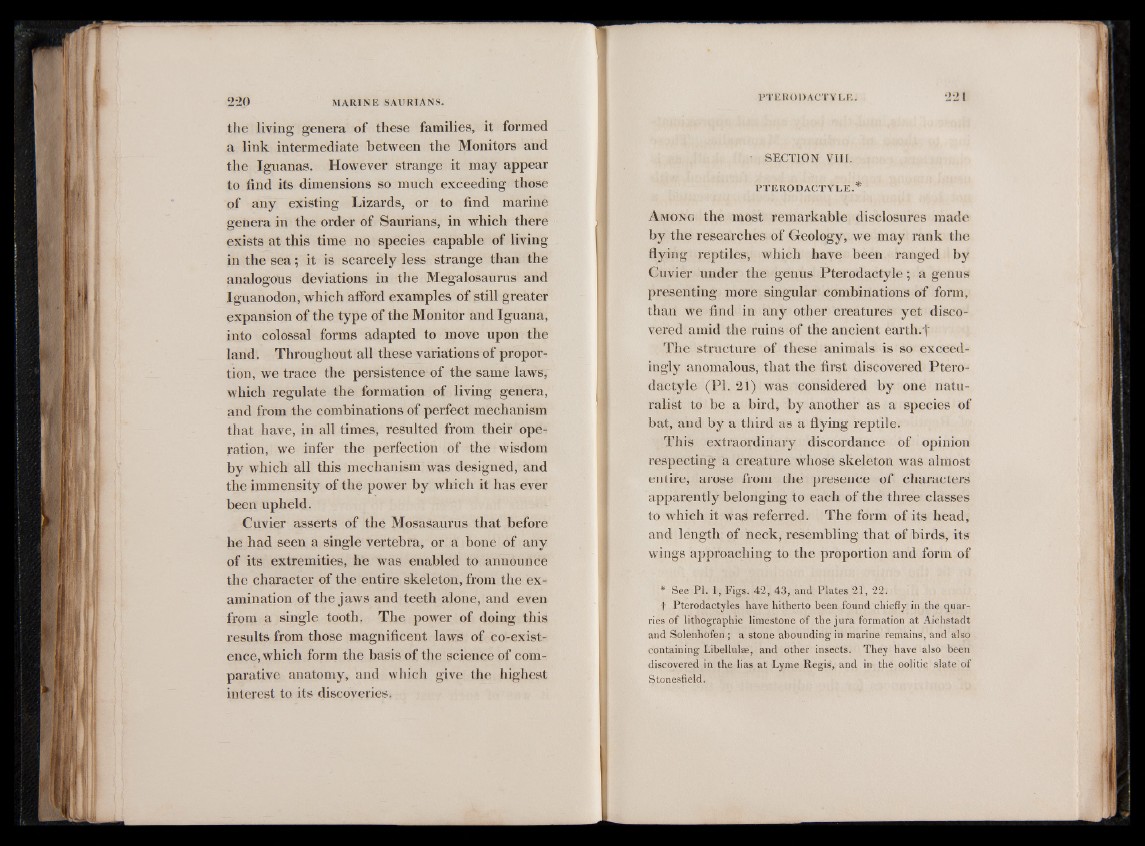
the living genera of these families, it formed
a link intermediate between the Monitors and
the Iguanas. However strange it may appear
to find its dimensions so much exceeding those
of any existing Lizards, or to find marine
genera in the order of Saurians, in which there
exists at this time no species capable of living
in the sea; it is scarcely less strange than the
analogous deviations in the Megalosaurus and
Iguanodon, which afford examples of still greater
expansion of the type of the Monitor and Iguana,
into colossal forms adapted to move upon the
land. Throughout all these variations of proportion,
we trace the persistence of the same laws,
which regulate the formation of living genera,
and from the combinations of perfect mechanism
that have, in all times, resulted from their ope-:
ration, we infer the perfection of the wisdom
by which all this mechanism was designed, and
the immensity of the power by which it has ever
been upheld.
Cuvier asserts of the Mosasaurus that before
he had seen a single vertebra, or a bone of any
of its extremities, he was enabled to announce
the character of the entire skeleton, from the examination
of the jaws and teeth alone, and even
from a single tooth. The power of doing this
results from those magnificent laws of co-existence,
which form the basis of the science of comparative
anatomy, and which give the highest
interest to its discoveries.
- SECTION VIII.
PT ERO D A CTY L E.*
A mong the most remarkable disclosures made
by the researches of Geology, we may rank the
flying reptiles, which have been ranged by
Cuvier under the genus Ptérodactyle ; a genus
presenting more singular combinations of form,
than we find in any other creatures yet discovered
amid the ruins of the ancient earth.j'
The structure of these animals is so exceedingly
anomalous, that the first discovered Ptérodactyle
(PI. 21) was considered by one naturalist
to be a bird, by another as a species of
bat, and by a third as a flying reptile.
This extraordinary discordance of opinion
respecting a creature whose skeleton was almost
entire, arose from the presence of characters
apparently belonging to each of the three classes
to which it was referred. The form of its head,
and length of neck, resembling that of birds, its
wings approaching to the proportion and form of
* See PI. 1, Figs. 42, 43, and Plates 21, 22.
f Ptérodactyles have hitherto been found chiefly in the quarries
of lithographic limestone of the jura formation at Aichstadt
and Solenhofen ; a stone abounding in marine remains, and also
containing Libellulæ, and other insects. They have also been
discovered in the lias at Lyme Regis, and in the oolitic slate of
Stonesfield.